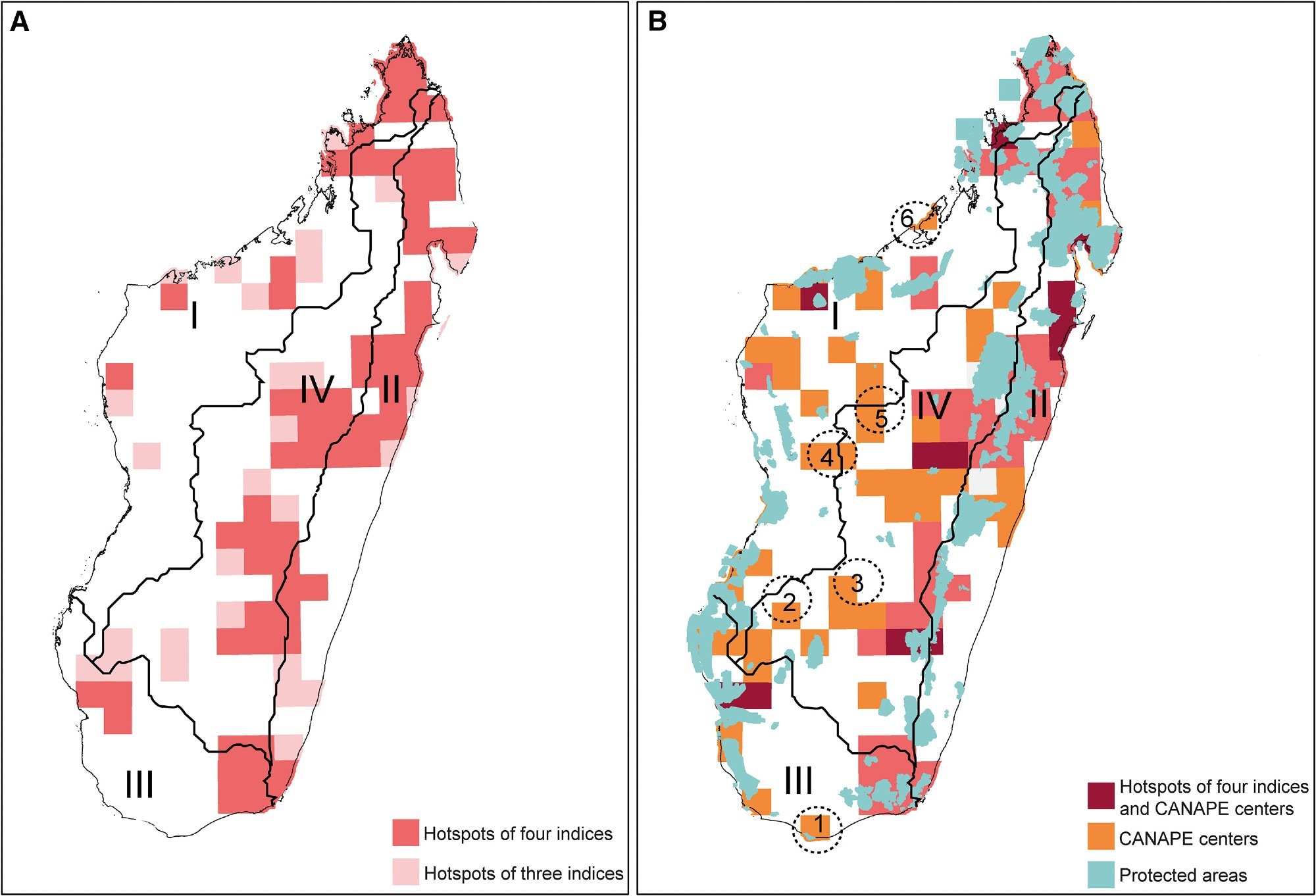Despite the importance of biodiversity conservation and the pressing need to prioritize it, determining which aspect of biodiversity warrants the utmost attention has been challenging, particularly in the face of limited conservation resources. Recent research published in Current Biology addresses this issue.
 Diversity hotspots, centers of phylogenetic endemism, and conservation gaps for Malagasy vascular plants. Image Credit: Institute of Botany of the Chinese Academy of Sciences.
Diversity hotspots, centers of phylogenetic endemism, and conservation gaps for Malagasy vascular plants. Image Credit: Institute of Botany of the Chinese Academy of Sciences.
Prof. Zhiduan Chen's team from the Institute of Botany of the Chinese Academy of Sciences (IBCAS), along with international collaborators identified the spatial heterogeneity of biodiversity hotspots and endemism centers. Using this data, they have pinpointed the conservation priorities for vascular plants in Madagascar.
Madagascar, the fourth largest island globally, is one of the most important global biodiversity hotspots. It is well known for its high level of endemic diversity, which primarily stems from its intricate geological past, geographical positioning, and biogeographic links with Africa, India, Southeast Asia, and northern Australia.
The researchers produced a novel dated tree of life for the island, encompassing an unparalleled sampling of 3,950 species (33% of all known species) and 1,621 genera (93% of all known genera) of Malagasy vascular plants. Their findings revealed that a majority of the existing endemic genera (69%) in Madagascar emerged relatively recently, during the Neogene–Quaternary period.
By integrating phylogenetic and geographic distribution data, the researchers unveiled an uneven distribution of taxon richness and phylogenetic diversity, with hotspots predominantly clustered in the humid forests of northern, eastern, and southeastern regions.
They additionally assessed endemic centers characterized by both taxonomic endemism and phylogenetic endemism. The analyses consistently indicated a notable concentration of paleoendemism in the humid eastern and central regions, whereas neoendemism was identified in the dry and spiny forests of western and southern Madagascar.
Lastly, the researchers pinpointed conservation gaps within frequently overlooked arid and semi-arid regions by overlaying biodiversity hotspots and centers of endemism with protected areas.
These identified gaps underscore the necessity for enhanced conservation efforts to safeguard Madagascar's biodiversity against the challenges posed by climate change and escalating anthropogenic pressures.
The study was funded by the National Natural Science Foundation of China, the International Partnership Program of CAS, and the Sino-Africa Joint Research Center of CAS, etc.
Journal Reference:
Omollo, W. O., et al. (2024). Spatial heterogeneity of neo- and paleo-endemism for plants in Madagascar. Current Biology. doi.org/10.1016/j.cub.2024.02.023.